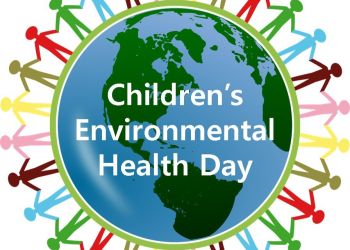Local Health Departments’ Role in Wildfire Response
Local health departments are life-saving first responders to natural disasters like hurricanes, tornadoes, wildfires, floods and earthquakes, as well as to other public health emergencies such as disease outbreaks, major accidents and terrorist attacks. The nearly 3,000 local health departments across our nation stand ready to help protect residents and families from hurricanes and all sorts of natural disasters and play a vital role in any recovery efforts. Their dedicated staffs work year-round to prepare and are on call 24-hours a day, every day, to respond when needed.
During wildfires, public health has a critical role in response and helping communities recover. LHDs are responsible for advising emergency management and state and local authorities on the health impacts of wildfires to inform and support response actions (e.g., residential and healthcare evacuations, air quality assessments). LHDs communicate with the public about the health risks of smoke and recommended actions to protect their health. Additionally, LHDs provide staff and resources to support evacuation centers and shelters for those displaced by wildfires.
Health Impacts
Wildfires can create widespread threats to public health and the environment. Smoke, ash, toxins, and dust can affect air quality. Wildfire smoke contains a mixture of chemical, gases and fine particulate matter (PM2.5), which is the main pollutant of concern in smoke since it can penetrate deep into the lungs. Smoke inhalation can cause immediate health effects, like coughing, stinging eyes, scratchy throat and trouble breathing normally, and can also lead to heart attacks, strokes and severe respiratory effects, including asthma attacks and acute bronchitis. People with heart or lung disease, older adults, and children are most at risk. Susceptible individuals also include pregnant women, newborns and people with obesity or diabetes.
Resources
As the association representing local health departments, the National Association of County and City Health Officials (NACCHO) will continue to assist and support these departments with their response and recovery efforts. We extend our appreciation and support to the firefighters, first responders, public health, emergency management, healthcare professionals and other partners and individuals who help our communities to respond and recover from wildfires. . NACCHO has compiled a list of resources to help affected LHDs, healthcare professionals, first responders and the general public to respond to and recover from these events.
Response
- Resources for LHDs
-
-
- Wildfire Smoke: A Guide for Public Health Officials is designed to help local public health officials prepare for and respond to smoke events, and includes guidance on how to communicate with the public about wildfire smoke and health.
-
- Resources for responders and healthcare professionals
-
-
- The National Institute of Environmental Health Sciences’ Wildfire Response Orientation is an awareness-level health and safety resource for wildfire responders.
- Particle Pollution and Your Patient’s Health is an evidence-based training for healthcare professionals that describes the health effects associated with particle pollution exposure and provide educational tools to help patients understand how they can protect their health.
-
- Resources for the public
-
-
- The California Department of Forestry and Fire Protection Ready for Wildfire app shares instructions, checklists and guidance on how people can protect their home, family and property. It also provides wildfire alerts based on a chosen zip code or within 30-miles of a user’s location.
- California Statewide Fire Map provides general locations of major fires burning in California.
- AirNow is a system developed by the U.S. Environmental Protection Agency, National Oceanic and Atmospheric Administration, National Park Service, tribal, state, and local agencies to provide the public with easy access to national, real-time air quality information. Based on the Air Quality Guide for Particle Pollution, individuals can reduce their exposure to particle pollution and protect their health.
- The Centers for Disease Control and Prevention has public health information on how individuals can protect their family and evacuate safely during a wildfire.
- Oregon Health Authority’s Wildfire Smoke and Your Health Factsheet offers information about the main public health effects of smoke exposure.
-
Risk and Emergency Communications
- Oregon Health Authority’s Crisis and Emergency Risk Communication Toolkit for Wildfireswas designed to assist with messaging during and after a wildfire event.
- Risk Communication Toolkit for Local Health Agencies includes guidance for speaking with the media during and following emergencies.
- Social Media Public Education Toolkit for Emergency Response which includes sample messages for a wide range of threats including flooding and storms.
Emergency Shelters
- Emergency Shelter Communications Toolkit offers information and guidance to provide widely accessible communications in an emergency shelter situation; it includes information to be used in shelter preparedness planning and activities, in addition to just-in-time implementation.
- Flagler County Health Department’s Special Needs Shelter Plan includes activities for both the preparedness and response phases and contains forms, supply lists, and job action sheets.
- The Standard Operating Guide for Emergency Shelter Operations outlines authorities, policies, organizational arrangements, operational concepts and procedures for emergency public shelter services.
Mental/Behavioral Health
- Psychological First Aid is a training guide for responders, healthcare and public health professionals to assist communities in moving forward following disasters and public health emergencies.
- Psychological First Aid fact sheet to support healthcare professionals.
- Psychological First Aid Field Operations Guide provides guidance to local Medical Reserve Corps units.
Recovery and Clean-up
For responders and clean-up workers
- The Occupational Safety and Health Administration has a list of resources for responders and workers involved in cleanup operations
- Centers for Disease Prevention and Control’s Worker Safety during Fire Cleanup Factsheethas information for worker and volunteers involved in wildfire clean-ups.
For the general public
- The California Environmental Protection Agencyhas information on fire response and recovery, and wildfire debris management and disposal.
- The County of San Luis Obispohas recovery and clean-up information for the general public and business owners.
LHDs with questions or other needs related to the wildfires may contact NACCHO’s Preparedness team at [email protected].








